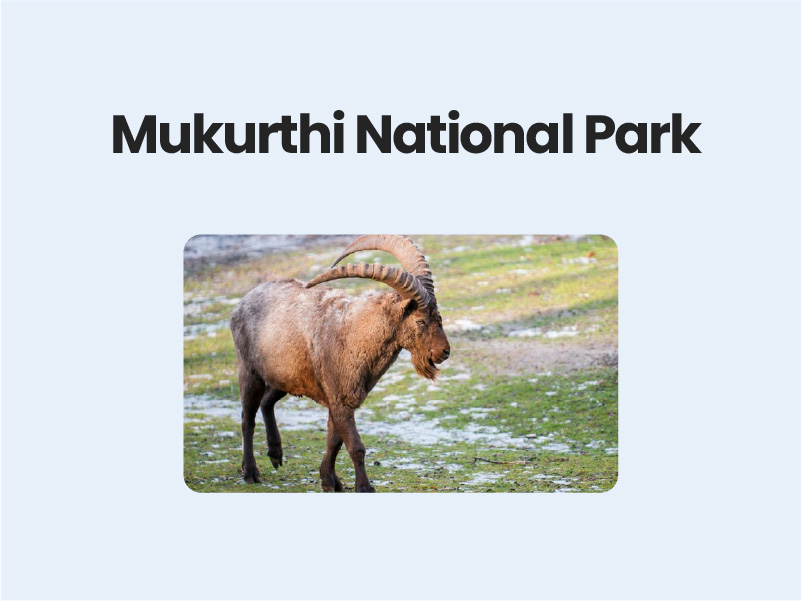Companion@360 → 7 Month programme to sharpen your writing skills → REGISTER NOW

Mukurthi National Park
Mukurthi National Park is located on the high altitudes of the Nilgiris, comprising rolling downs interspersed with temperate sholas in depressions. The landscape is extremely picturesque and a seat of endemism in its relationship with Himalayan flora and fauna.
- This forms part of the Nilgiris biosphere reserve. From Udhagamandalam there are four different entry points for reaching the sanctuary.
- 7846 ha. of reserved forests, the entire area of which has been declared as a National Park.
- Primarily grassland, characteristically interspersed with numerous isolated, compact, sharply defined montane wet temperate mixed forests locally termed ‘Sholas’, with beautiful brooks.
- Nilgiris tahr, sambar, barking deer, Nilgiri marten, otter, jungle Cat, jackal etc. Avifauna consists mostly of hill birds among which laughing thrushes, whistling, thrushes, woodcock, wood pigeon and black eagle may be noticed.
- Butterflies with Himalayan affinity like the Blue Admiral, Indian Red Admiral, Indian Fritillary, Indian Cabbage white, Hedge blues and Rainbow trouts.
Key Points:
- Preparing for the summer and peak fire season, the forest department has begun work on construction of fire lines in the Mukurthi National Park (MNP).
- “fire lines,” also known as “fire breaks,” in a portion of the park. Fire lines are described as an artificially formed break in foliage or forest cover to control the spread of wildfires by limiting the amount of combustible vegetation available.
- This year, already 20 km. of fire lines have already been constructed, with another equivalent amount of fire lines to be constructed in the coming months.
- “As there were fires in some areas which are most prone to wildfires last year, there will be no “cool burning” done to control the vegetation available this year,”
- Cool burning is done in the national park, which is closed to tourists, in a controlled manner by artificially creating small, localised fires to limit the amount of vegetation available in any given area, meaning any fires that occur during the summer will not have any build-up of “vegetative fuel” to use to become a large, uncontrollable fire.
- The removal of invasive trees, such as wattle is also set to be stepped up in the national park. the spread of the trees from Kolaribetta Peak and Korakundah Forest Ranges in the Nilgiris division into the national park.

